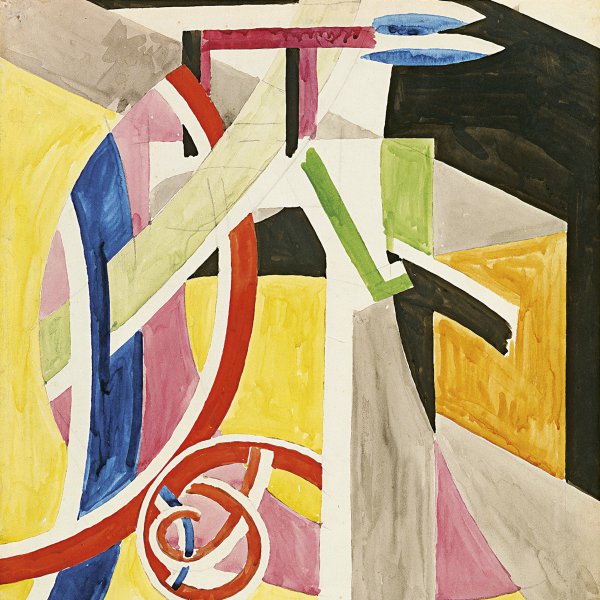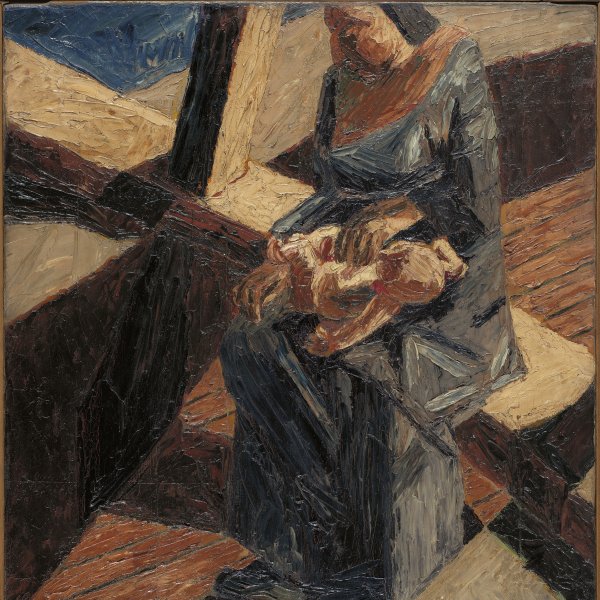David Bomberg
Birmingham, 1890-London, 1957
David Bomberg, a painter associated with the British avant-garde movements, enrolled at the City and Guilds Institute in 1905 and began studying at the Westminster Art School under Walter Sickert in 1908.With the intermediation of John Singer Sargent and the assistance of the Jewish Education Aid Society, he furthered his studies at the Slade School of Art in 1911. As a result of the contemporary art exhibitions held in London and a trip to Paris in 1913, during which he met Picasso and Modigliani, among others, Bomberg began to embrace the new experimental ideas that were brewing on the continent. His art became angular and he came into contact with Wyndham Lewis, whose oeuvre had developed in the same direction. However, although his interest in the industrial world and his style affiliated him with the members of the Vorticist movement, he resisted becoming one of them. He was a guest artist at the Vorticist Exhibition of 1915, but did not allow his works to be reproduced in the Blast magazine.
In June 1914 the Chenil Gallery staged a one-man show of his work that was a success with critics and attracted the interest of young avant-garde artists. This situation was interrupted by the outbreak of the First World War and after it ended, Bomberg returned to figuration, a path on which he had already embarked in the works commissioned from him by the Canadian Government during the war. Disillusioned by the destructive power of machines, which had previously fascinated him, he developed a more organic style, as a result of which he and Lewis went their separate ways. In 1923 he travelled to Palestine and concentrated on executing almost topographical landscapes of the places he visited. Towards the end of the decade his style became more expressive in the works produced during his numerous trips to Scotland and Spain. Although this stylistic change was not approved of by critics until after his death, Bomberg became an influential teacher at London Borough Polytechnic. Frank Auerbach and Leon Kossoff were among his students.
In June 1914 the Chenil Gallery staged a one-man show of his work that was a success with critics and attracted the interest of young avant-garde artists. This situation was interrupted by the outbreak of the First World War and after it ended, Bomberg returned to figuration, a path on which he had already embarked in the works commissioned from him by the Canadian Government during the war. Disillusioned by the destructive power of machines, which had previously fascinated him, he developed a more organic style, as a result of which he and Lewis went their separate ways. In 1923 he travelled to Palestine and concentrated on executing almost topographical landscapes of the places he visited. Towards the end of the decade his style became more expressive in the works produced during his numerous trips to Scotland and Spain. Although this stylistic change was not approved of by critics until after his death, Bomberg became an influential teacher at London Borough Polytechnic. Frank Auerbach and Leon Kossoff were among his students.






